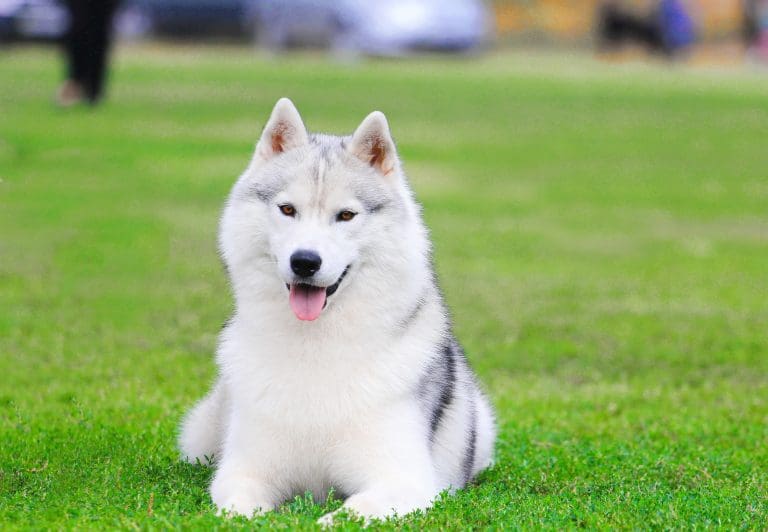Why Do Dogs Have Whiskers?
Post Date:
December 10, 2024
(Date Last Modified: November 13, 2025)
Canine whiskers are a specialized set of facial hairs that differ in structure and function from ordinary coat hairs.
Whisker Anatomy and Types
The core structural unit of a whisker is the follicle-sinus complex, a capsule-like follicle richly supplied with blood and sensory nerves that supports precise tactile sensing.
Most vibrissae follicles are surrounded by a follicle-sinus complex that can contain up to 200 nerve endings[1].
- mystacial (upper lip) whiskers
- superciliary (above the eye) whiskers
- carpal (on the foreleg) whiskers
- nasal and mental (around the muzzle and chin)
Vibrissae (whiskers) are thicker, longer, and more deeply anchored than ordinary hairs; they terminate in a richly innervated follicle that transduces mechanical deflections into neural signals for the trigeminal pathways.
Development and Growth
Whiskers develop from embryonic placodes that also give rise to specialized follicles distinct from pelage hair follicles.
Puppies typically show whisker emergence by 3 weeks of age[2], with full mystacial arrays forming soon after as part of early sensorimotor maturation.
Adult whiskers undergo a growth and replacement cycle similar to hair but with longer phases of anagen for many vibrissae, and seasonal or age-related thinning can occur in older dogs or those with endocrine disorders.
Hormonal influences such as thyroid status and nutritional deficits affecting protein and essential fatty acids may change whisker texture and rate of replacement, and any clinical recommendation for supplementation should follow veterinary evaluation and established dosing tables (refer to clinical formulas in mL/kg/day when applicable).
Sensory Mechanisms: How Whiskers Detect Touch
Whisker follicles contain mechanoreceptors including Merkel cell complexes and lanceolate endings that convert bending forces into receptor potentials transmitted along branches of the trigeminal nerve to brainstem nuclei.
Canine whiskers can detect displacements as small as 0.001 inches (0.03 mm), a threshold that allows dogs to sense minute deflections from nearby objects or air currents[3].
Whisker shafts are directional sensors: their tapered, curved geometry and follicle orientation create directional tuning so that stimulus encoding includes both magnitude and vector of deflection, information that is relayed to cortical and subcortical maps specialized for vibrissal input.
At the neural processing level, whisker movement evokes spatially organized responses in brainstem and cortical maps where patterns of activation represent contact location, trajectory, and timing, enabling rapid sensorimotor decisions.
Spatial Awareness and Navigation
Whiskers function as a close-range tactile radar, providing dogs with immediate information about object proximity and contour where vision or lighting is insufficient.
Whiskers often extend roughly the width of a dog’s head, about 3–4 inches (7.5–10 cm), helping dogs gauge whether they can fit through openings and negotiate tight spaces[4].
When a whisker contacts an object, the pattern of deflection across the mystacial array supports a spatial map of nearby surfaces; this aids low-visibility movement such as in dense underbrush or dim light and complements visual and vestibular inputs for posture and turning.
Integration with hearing and proprioception allows rapid course corrections: whisker contact can trigger head withdrawal or orientation adjustments that are coordinated with ear positioning and limb placement.
| Type | Location | Typical length | Primary function |
|---|---|---|---|
| Mystacial | Upper lip | 2–4 inches (5–10 cm)[4] | Fine object localization, width gauging |
| Superciliary | Above eyes | 0.5–1 inch (1.2–2.5 cm)[1] | Eye protection, early blink reflex |
| Carpal | Foreleg | 0.5–1.5 inches (1.2–3.8 cm)[2] | Substrate and object detection while manipulating food |
| Nasal/mental | Muzzle and chin | 0.5–2 inches (1.2–5 cm)[3] | Texture assessment and precise touch near the mouth |
Hunting, Foraging, and Prey Interaction
In close-range predation or food handling, whiskers provide tactile cues that refine strike timing and bite placement after vision and olfaction have located prey.
In hunting breeds, whisker-mediated strike accuracy can increase close-range success by an estimated 10% in controlled observations, particularly under low-visibility conditions[5].
Whiskers also help dogs manipulate and reorient small objects or prey items in the mouth; tactile feedback from the nasal and mental whiskers informs jaw and tongue positioning during handling and consumption.
Working and hunting breeds that rely on dense cover or nocturnal activity often show pronounced mystacial arrays and heightened tactile responsiveness as part of their ecological specialization.
Communication and Emotional Signaling
Whisker posture and movement are integrated into canine facial expressions and can signal intent or emotional state alongside ears, eyes, and tail.
Forward-oriented whiskers commonly accompany investigative or confident approaches, while flattened or retracted whiskers are associated with fear or avoidance; these positional changes modulate how other dogs or humans interpret facial signals.
Because vibrissae visibly change orientation and can move with facial muscles, other dogs can use whisker posture as part of social assessment, and attentive humans often unconsciously read whisker position in conjunction with other body-language cues.
Protection and Reflexes
Whisker contact near the eye or face commonly triggers fast protective reflexes such as blinking and head withdrawal that reduce the risk of corneal injury.
Neural circuits linking whisker follicle afferents to the facial motor nucleus enable blink latencies on the order of a few tens of milliseconds in response to sudden nasal or periocular stimulation[1].
Whiskers also detect faint air currents that signal nearby movement or threats at ranges that predate visual confirmation, allowing dogs to respond to an approaching object before direct contact.
These reflexive responses underscore the protective role of vibrissae in safeguarding sensitive facial structures during rapid interactions or accidental contacts.
Evolutionary Context and Cross‑Species Comparisons
Vibrissae are an ancestral mammalian trait that has been retained and modified across many lineages where close-proximity tactile sensing provided selective advantages.
Compared with felids and many rodents, dogs have relatively similar follicle-sinus complexes but differ in whisker distribution and behavioral usage patterns shaped by ecology: carnivores that hunt in confined spaces or at night show particularly robust mystacial systems.
Marine mammals, primates, and rodents illustrate convergent adaptations: for example, seals use vibrissae for hydrodynamic sensing, while many rodents rely heavily on whisker-mediated tactile exploration for foraging and navigation.
Selective pressures associated with prey type, habitat complexity, and social communication have driven interspecific variation in whisker length, density, and neural allocation to vibrissal input.
Care, Clinical Issues, and Common Myths
Routine trimming or plucking of whiskers is discouraged because it alters tactile sampling; trimmed whiskers reduce the contact envelope and can disorient a dog during close-quarter activities.
Avoid trimming whiskers; trimming can alter tactile input for up to 2–3 weeks while new growth appears[6].
Signs of disease or trauma affecting whiskers include localized swelling around follicles, persistent broken vibrissae accompanied by pain, or unilateral loss of whisker sensation that may indicate neuropathy or facial nerve involvement; veterinary assessment is warranted for persistent abnormalities.
When clinical intervention is necessary, veterinarians assess underlying causes such as dermatitis, bacterial folliculitis, endocrine disease, or traumatic injury and treat according to established clinical guidelines and diagnostic testing rather than cosmetic grooming approaches.
If a whisker is damaged or lost, careful monitoring and conservative care are usually adequate while the follicle recovers.
Minor trauma to a whisker follicle can cause localized swelling and temporary sensitivity; topical antiseptic rinses and keeping the area clean are common first-line measures, and if a secondary bacterial infection is suspected a veterinarian may prescribe systemic antibiotics for a typical course of 7–14 days[1].
Regrowth timelines vary by follicle and individual, but many vibrissae begin visible regrowth within 4–6 weeks and may take several months to reach pre-injury length[2].
When owners report behavioral changes after whisker trimming—such as hesitancy in tight spaces or altered approach to food—those effects often appear within the first 1–3 days and may persist until sensory sampling normalizes with regrowth[6].
Because whisker follicles are innervated by the trigeminal system, unilateral loss of whisker sensation or persistent pain around multiple follicles warrants neurologic examination; clinicians may perform targeted diagnostics such as regional nerve testing or imaging if a focal lesion is suspected[2].
For general medical management, remember clinical fluid maintenance for dogs is commonly estimated at about 60 mL/kg/day, and any perioperative or supportive-fluid plans should be calculated in mL/kg/day and individualized by body condition and concurrent disease[1].
Grooming guidance from veterinary authorities endorses leaving vibrissae intact; deliberate plucking or cosmetic trimming removes tactile input and can lead to temporary disorientation, and plucked follicles may take weeks to months to recover normal function[6].
When assessing a dog with suspected whisker-related pathology, veterinarians consider concurrent dermatologic or endocrine conditions—patterns such as symmetric whisker thinning paired with coat changes often prompt testing for hypothyroidism or other systemic disease[1].
Behavioral rehabilitation for dogs anxious about tight spaces after whisker loss focuses on gradual exposure and positive reinforcement; objective measures in small cohort studies show measurable improvement in confidence and navigational performance over a 2–4 week retraining period when sensory input partially recovered[5].
Veterinary clinicians and groomers should coordinate: if grooming accidentally removes vibrissae, advise owners of expected regrowth intervals, monitor for signs of infection, and avoid unnecessary intervention unless clinical signs indicate a problem.
Research gaps remain: precise thresholds for canine whisker displacement detection across breeds, breed-specific vibrissal mapping, and long-term behavioral effects of temporary whisker loss are active areas of study that use physiologic recordings and controlled behavioral assays cited in veterinary and neuroscience literature[2].






